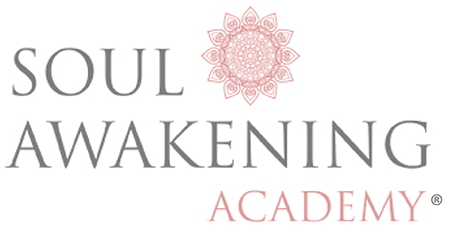Most professional coaches offer a short complimentary coaching session to potential clients.
It is a way to help people understand what coaching is and how you can help them. It is a great way to get people to connect with you and build rapport from the get go.
A nice, easy-flowing conversation will help you ascertain whether or not the client is ready for coaching and if you, in fact, are the best person for the job.
It gives the potential client an opportunity to kick the tyres, ask questions, and talk about what they want.
Here are the things you should look to establish in a complimentary session:
Rapport
Make a personal connection to the client. Even if this is conducted over the telephone and you cannot see the client and they can’t see you, both of you will feel if a connection has been made.
Genuine curiosity, intent listening and excitement about the prospect of working together creates a spark between you both.
You should ask questions such as ‘tell me about yourself and your life right now?’ ‘What has led to seeking out a life coach?’ and ‘how do you feel about the prospect of working with a coach?’
Enthusiasm
How much enthusiasm and motivation does the client have for achieving their goals and what has made them want to do it now?
What have they tried in the past that gave them great results and not so great results?
An important part of the complimentary session is to ascertain the client’s motivation factor. Do they have a dream they have been procrastinating over? If so, what is it costing them staying the way they are? How would look and feel if they stopped procrastinating and reached their dream life? What is most important to them in life?
Inspiration
Listen to your clients’ needs and provide examples of how you think coaching could work for them. Maybe you have faced a similar situation yourself or you have helped someone in a similar situation. If so, tell them about it (maintain client confidentiality, of course!).
Make sure you provide some value up-front during the session. You might share an intuitive insight, a coaching technique, or coach the prospective client briefly on one aspect of his/her challenge. Providing value increases credibility and that working with you could be a life-changing experience.
Willingness
You client may know a little, a lot or nothing at all about coaching, what entails, what happens during a coaching session of what results can be expected.
This is your opportunity to fill in the missing blanks for the client so they can make an informed decision to work with you.
Look to establish is they are willing to be teachable and to learn from, and put into practice, what you can offer them.
If you have the previous steps well, often the person is ready to go ahead and work with you. If the person is new to coaching, you may need to take time to describe the process or even demonstrate it. Here are a few points to cover:
- How often we will meet, and for how long.
- What a typical session looks like
- What is expected of you during the sessions
- Fees and procedure
At this stage, it’s important to take time out.
I always invite my clients to sleep on it, absorb all the information, come back to me should a question arise and get back in touch when they are ready to take the leap.
This allows the client to feel at ease in a non-pressured into making a decision there and then.
To ascertain whether your client is ready for coaching, it is vitally important to do this at the consultation stage.
The consultation may be conducted over the telephone or in-person, but you want to focus on what the client wants to achieve through coaching, rather than on the problem that has made them seek a coach.
By asking questions that explore the client’s current resources and past success the client has had, helping them to see their strengths along with their future hopes and dreams can instil motivation rather than focusing on the present problems and past issues too heavily.
By identifying the things that are currently happening that are positive and what the client wishes to achieve in the future helps to construct a mental vision of a preferred future for themselves.
Asking the client to give some thought to their goals before investing in coaching is an excellent way of setting the change in motion.
It also gives the client time to think it through and clarify their intention. Sometimes the consultation phase can make a big difference in how the client feels by the time they come to see you.
Here are some things you should say:
“Before you come to see me, it would be useful if you could spend some time clarifying what you want to get from our coaching sessions.
“Ask yourself honestly what changes you want to make in your life.
“How will you be thinking, feeling and acting as a result of the changes?
“Try to be really clear and specific on the things you want not on the things you don’t want.
“It might help if you write it all down and bring it with you should you choose to book your coaching session after our consolation today”.
The following questions may also help to create a mental picture of a preferred future:
- What changes would you like to see as a result of our time together?
- If coaching was useful to you, how would you know?
- What might you be doing differently?
- What would be a really good outcome for you as a result of seeing a coach?
- How would people recognise the changes in you?
- What changes will you notice in the way you feel?
- What changes will you notice in the way you think?
- What changes will you notice in the way you act?
- How will those changes be good for you?
- How else? Repeat X 5
You should ask questions that will help the potential client consider what goal is most likely to have the most positive impact on their life, for example:
- To give yourself the best possible chance of being happy, what changes do you need to make?
- In order to create a harmonious environment for you to be happy, what would a harmonious environment look like?
- When environment is in a state of harmony how will you know?
- What will you be doing differently?
- How you will be thinking?
- How you will be feeling?
- How you will be acting?
These questions will direct their focus towards promoting the best possible environment which themselves will support their wellbeing.
In order to create a well-defined goal, we would need to continue this line of questioning in a focused way.
Many people know what a harmonious life looks like and are able to identify what needs to change in order for them to move into this state.
There are, however, many other people who have no idea what mental, emotional, physical and spiritual wellbeing look like.
This is where we would use goal-setting techniques to help them filter bite-sized, well-constructed goals for themselves.
Prioritising goals
Through open, solution-focused questions you can establish the overall goal state for coaching.
The goal may consist of different aspects, or it is possible that the client may have a few very different goals for coaching.
It is important to prioritise the goals so that it is clear which needs to be addressed first. The simplest way to do this is to ask the client: “Looking at these changes you want to make, which of them is the most important to you?”
Do you want to get better results with your clients? Do you want to use a tried and tested coaching framework to help you and clients get maximum results time and time again? Check out the Soul Awakening Method here.




0 Comments